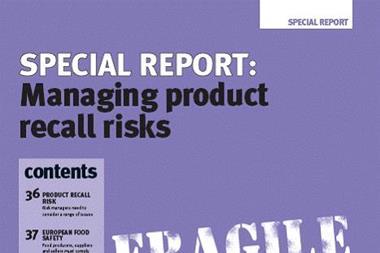Comparative advertising and new digital channels can increase exposures, says Miller
Companies are facing increased risks due to the proliferation of new communication channels and increasingly aggressive marketing tactics, heard risk managers at a Miller Insurance Services briefing.
As companies compete to launch new products and increase their market share, they run the risk of omitting to protect their own intellectual property (IP), infringing on the IP rights of others, or suffering defamation, privacy or image rights issues.
Rupert Alabaster, director of Professional Risks at Miller, said: ‘The negative consequences of a product recall on the value of a brand are well understood. However, the risks to more intangible assets – which now account for around 75% of a company’s value – can be just as destructive to brand value, but are much less well understood or protected.’
He said this is particularly pertinent at the moment: ‘In times of economic difficulty, competition for sales can generate increasingly aggressive behaviour by companies. Comparative advertising, for example, can create unnecessary legal problems, through infringing trademarks or factual inaccuracy.’
‘In addition, companies are increasingly looking to the online world to boost their brands. They want to reap the benefits of being part of the social networking phenomenon but forget to consider some of the risks, which can have expensive consequences. In one recent trend, companies are creating customer blogs and chatrooms without the relevant clearance protocols, leading to increased copyright and defamation exposures.’
Giles Crown, partner at law firm Lewis Silkin, continued: ‘There have been several recent cases that illustrate the problem very clearly. In terms of comparative advertising, O2 recently lost a four-year legal battle against its rival 3, claiming that its bubble trademarks had been infringed in an advert that first aired in 2004. The advert featured O2's signature bubbles alongside more attractive tariffs from 3, but the European Court of Justice found that 3 could use robust but fair advertising that incorporated the bubbles, as long as it did not cause consumer confusion.’
‘Issues can also arise for brands from the shape and design of new products. Kenwood recently successfully defended itself against claims that Kenwood’s new kMix mixer was too close to KitchenAid’s trademark for the shape of its iconic retro mixer, and there was a long-running dispute between Procter & Gamble (P&G) and Reckitt Benckiser over the design of P&G’s ‘Febreze’ air freshener product. Online, brands are setting up websites involving user-generated content, blogs and links to other sites – such as YouTube – all of which involve significant legal risk.’
Companies have traditionally turned to a range of covers to protect themselves from these risks, including professional indemnity, directors’ and officers’ liability, employment practices liability, public liability and specific IP rights policies.
‘All of these might be termed ‘part solutions’ to the problem, often excluding at least one of the necessary covers,’ said Alabaster.
“We are working with specialist underwriters like Axis to design more holistic coverages that address such emerging risks and which can stand-alone or wrap around the present corporate insurance programme.’



















No comments yet